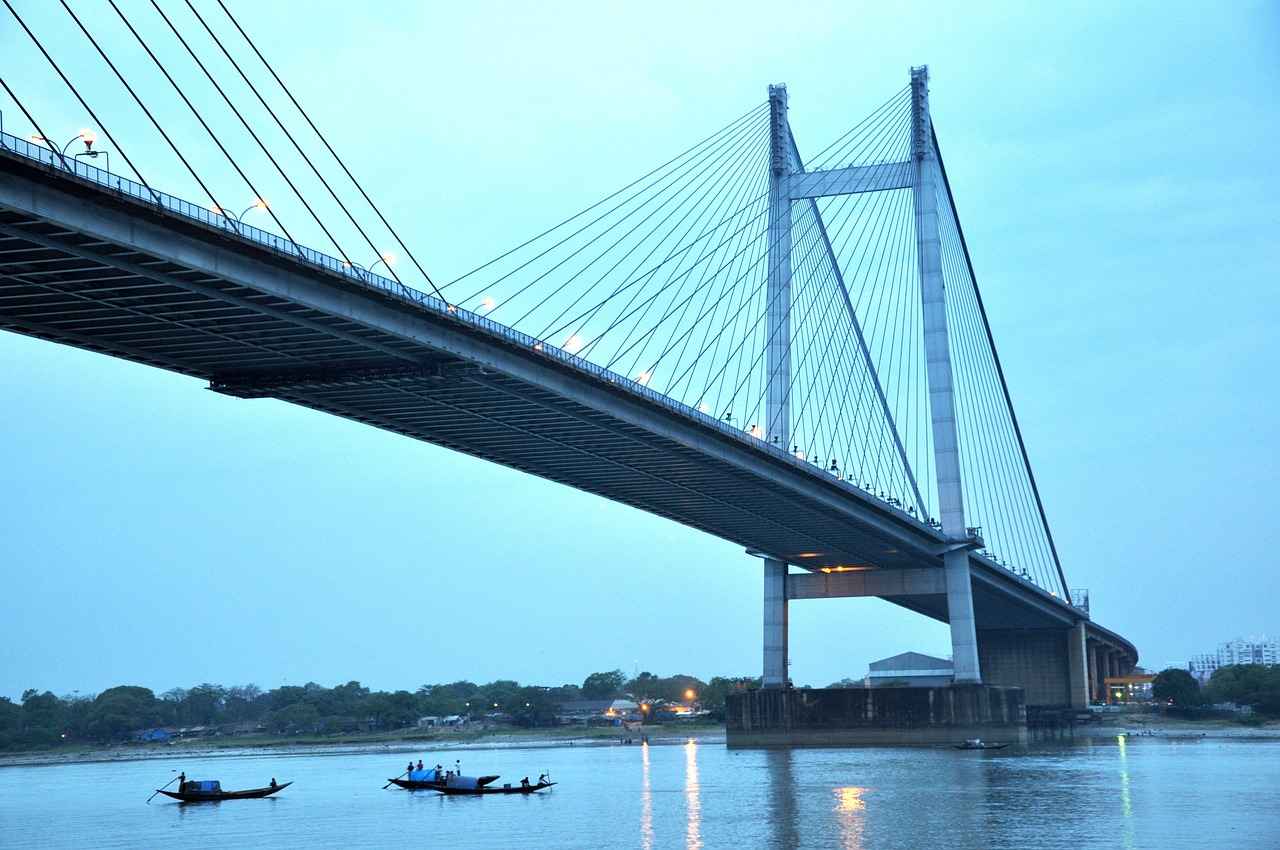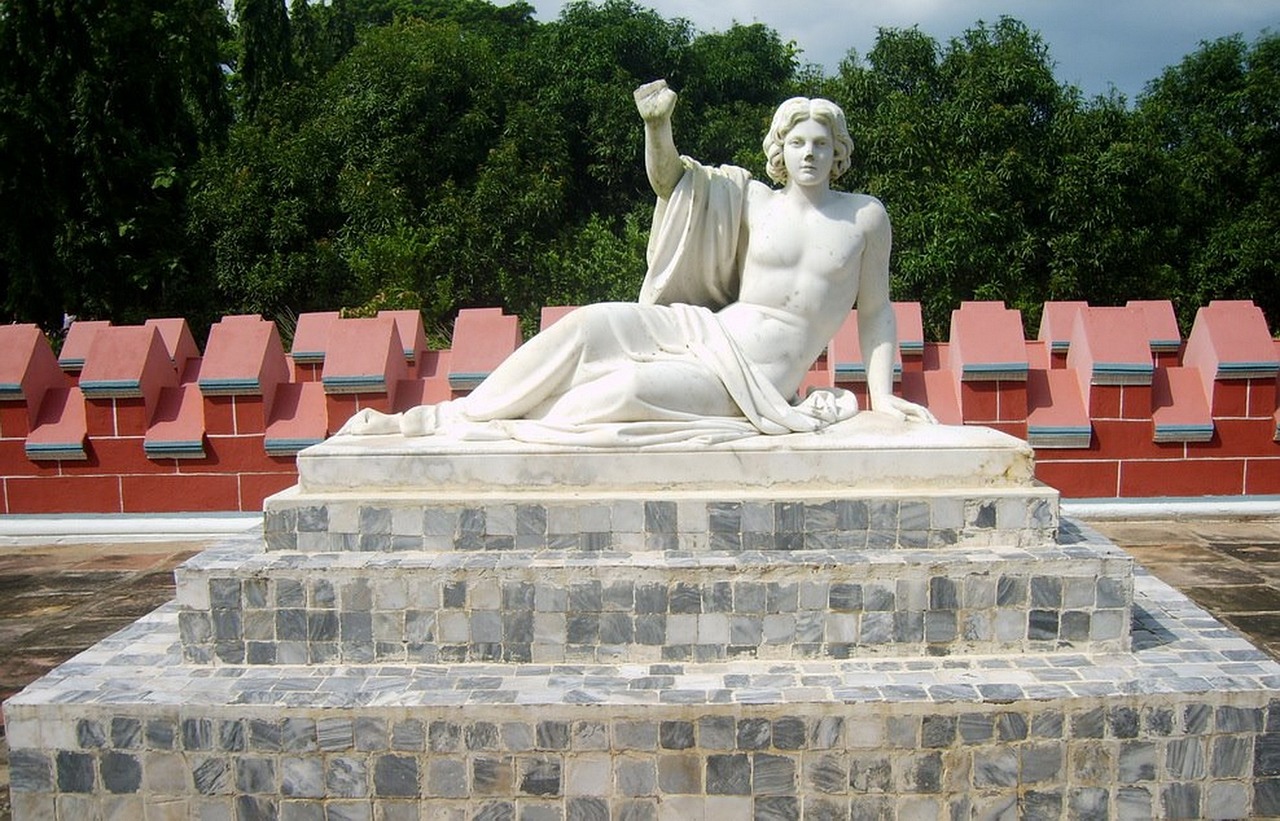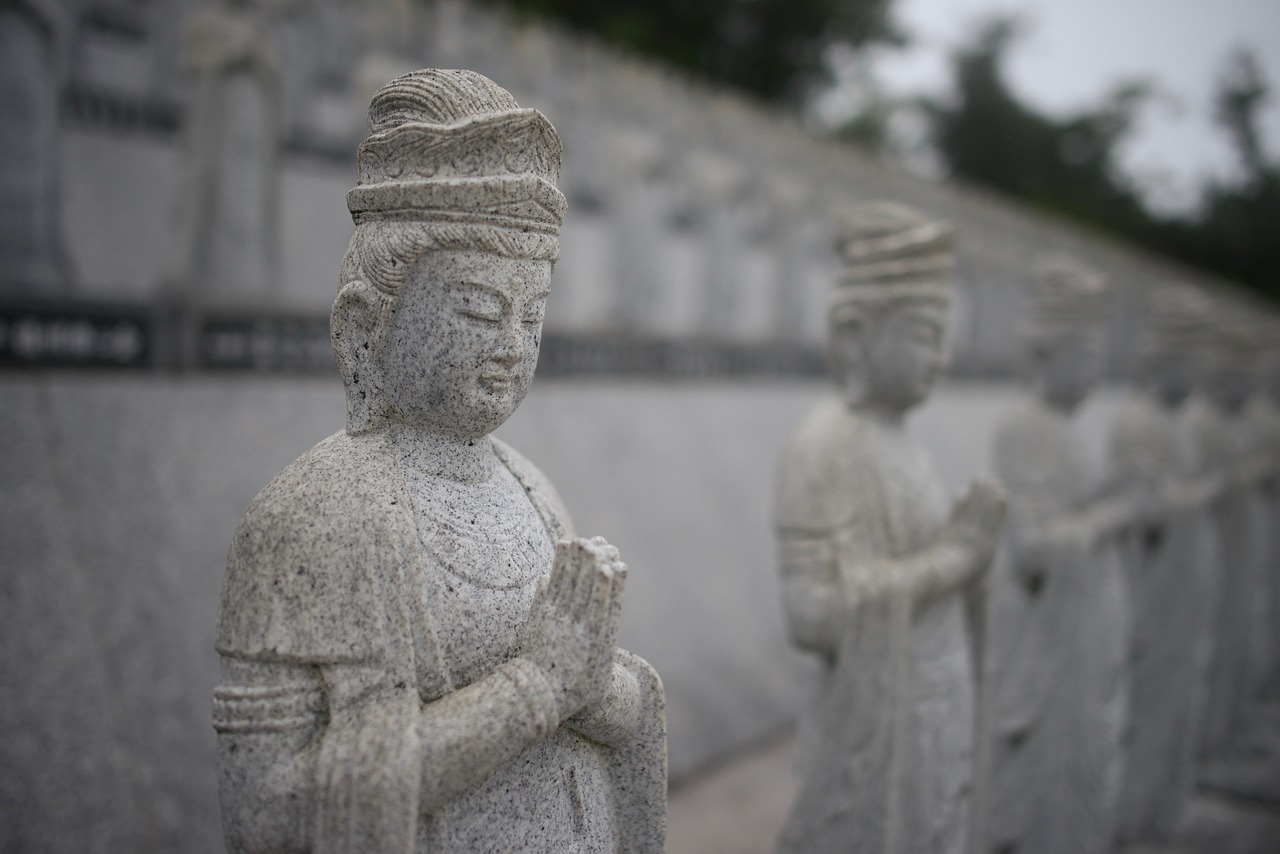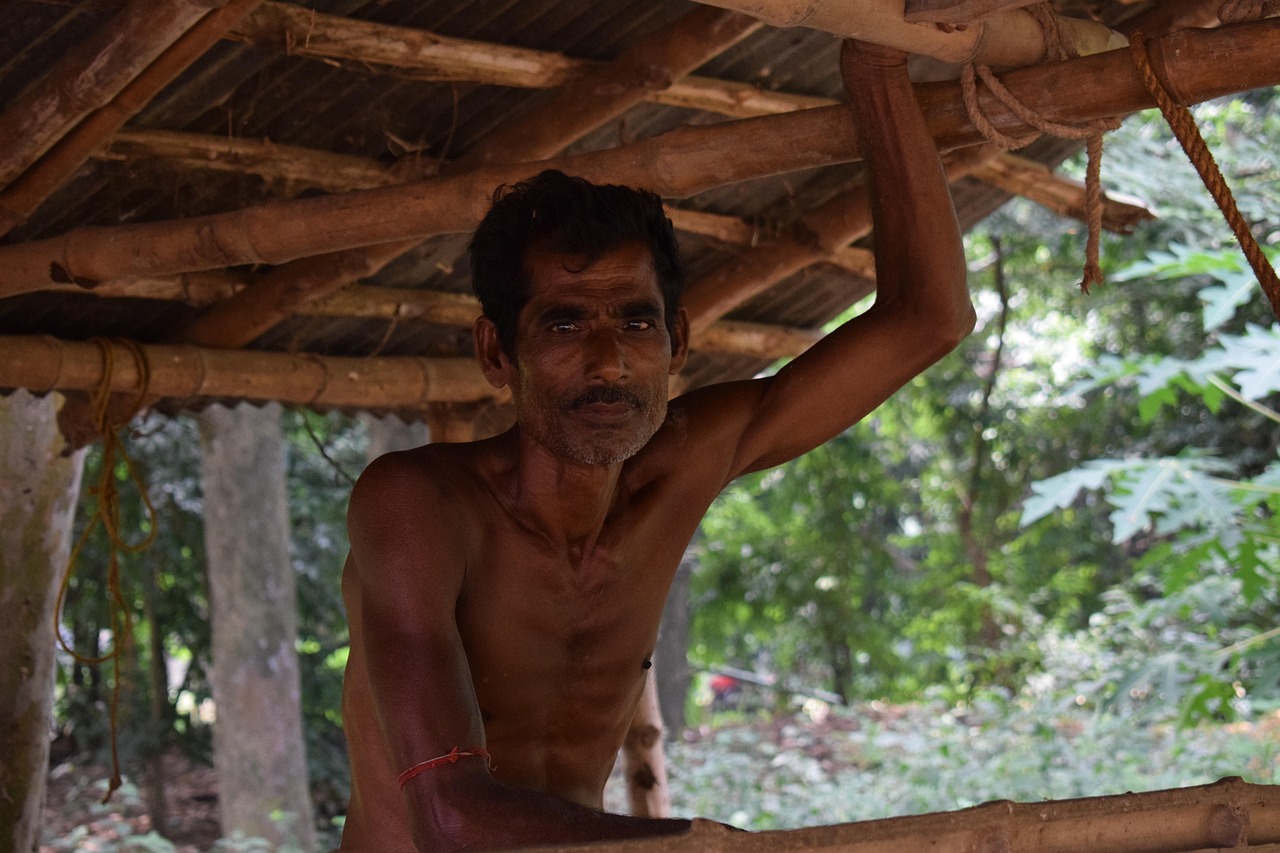This article delves into the significant transformations that have occurred in West Bengal under the leadership of Mamata Banerjee. Her tenure as Chief Minister has been marked by a series of policies and governance styles that have not only influenced the political landscape of the state but have also initiated profound socio-economic changes.
Overview of Mamata Banerjee’s Political Journey
Mamata Banerjee’s political career began in the late 1970s, where she quickly rose through the ranks to become a prominent figure in West Bengal politics. Her determination and grassroots connection have played a pivotal role in her ascent to the Chief Minister’s office, setting a foundation for her impactful leadership.
Key Policies Implemented by Mamata Banerjee
Under her administration, several key policies have been introduced, particularly in the realms of education, healthcare, and rural development. These initiatives aim to enhance the quality of life for the citizens of West Bengal.
- Education Reforms Under Mamata Banerjee: The government has significantly increased funding for education, establishing new schools and enhancing existing ones to improve educational quality.
- Healthcare Improvements: Initiatives have focused on making healthcare more accessible and affordable, with new facilities being established across the state.
- Economic Growth Strategies: Mamata Banerjee has implemented various economic policies aimed at boosting investment and supporting small and medium enterprises.
Social Welfare Schemes and Their Impact
Her administration has also launched numerous social welfare schemes aimed at uplifting marginalized communities, with a particular focus on women empowerment and support for farmers.
Challenges Faced by Mamata Banerjee’s Government
Despite her successes, Mamata Banerjee has faced significant challenges, including political opposition and governance issues that have tested her leadership.
Future Prospects for West Bengal
Looking ahead, Mamata Banerjee has set ambitious long-term development goals for the state, focusing on sustainability and economic resilience, while addressing emerging challenges and opportunities for growth.
In conclusion, Mamata Banerjee’s leadership continues to shape the future of West Bengal, with her policies and initiatives aiming to foster a more equitable and prosperous society.

Overview of Mamata Banerjee’s Political Journey
Mamata Banerjee has emerged as a formidable force in Indian politics, particularly known for her significant contributions to the state of West Bengal. Her political journey is marked by resilience, determination, and a vision for change. This section provides an overview of her early career, her rise in politics, and how she ultimately became the Chief Minister of West Bengal, setting the stage for her impactful leadership.
Born on January 5, 1955, in Kolkata, Mamata Banerjee’s political journey began at a young age. She became involved in student politics during her college years, joining the Indian National Congress party. Her early activism focused on social issues, particularly those affecting the marginalized communities in West Bengal. Her dedication and passion quickly earned her recognition within the party.
In the late 1980s, Mamata Banerjee’s political career took a significant turn when she was elected as the youngest Member of Parliament (MP) at the age of 35. She served as the Minister of Railways in the United Front government in the 1990s, where she gained a reputation for her bold decisions and commitment to public service. However, her ideological differences with the Congress party led her to establish the Trinamool Congress (TMC) in 1998, a move that would redefine her political trajectory.
Under her leadership, the TMC gained substantial support, particularly among the rural population, as she focused on issues such as land rights, employment, and social justice. Her relentless campaigning and grassroots mobilization played a crucial role in the 2011 West Bengal Legislative Assembly elections, where the TMC won a historic victory, ending the 34-year rule of the Communist Party of India (Marxist).
As the Chief Minister, Mamata Banerjee set forth a vision for a New Bengal, implementing various policies aimed at improving the socio-economic conditions of the state. Her leadership style is characterized by direct communication with the public and a commitment to addressing their concerns, which has endeared her to many constituents.
In conclusion, Mamata Banerjee’s rise in politics is a testament to her unwavering dedication to the people of West Bengal. Her journey from a grassroots activist to the Chief Minister has not only transformed the political landscape of the state but has also set the stage for her ongoing efforts to drive inclusive growth and development.

Key Policies Implemented by Mamata Banerjee
Mamata Banerjee, the Chief Minister of West Bengal, has introduced a variety of policies aimed at transforming the socio-economic landscape of the state. Her administration has focused on three crucial areas: education, healthcare, and rural development. These initiatives are designed to uplift the living standards of West Bengal’s citizens and foster inclusive growth.
- Education Reforms: Under Banerjee’s leadership, the education sector has witnessed significant reforms. The government has increased funding for schools, established new educational institutions, and launched programs to enhance the quality of education. Initiatives like the Kanyashree Prakalpa scheme aim to encourage girls to pursue education by providing financial support.
- Healthcare Initiatives: The healthcare system in West Bengal has been bolstered through the introduction of various initiatives. The Swasti Sathi scheme provides health insurance coverage to families, ensuring access to necessary medical services. Additionally, new hospitals and healthcare facilities have been established, improving accessibility and affordability for all citizens.
- Rural Development Programs: Banerjee’s government has implemented numerous programs to support rural communities. Initiatives like the Krishak Bandhu scheme provide financial assistance to farmers, promoting agricultural productivity and sustainability. Furthermore, infrastructure development in rural areas has been prioritized, enhancing connectivity and access to essential services.
Overall, Mamata Banerjee’s policies reflect a commitment to improving the lives of West Bengal’s citizens through targeted interventions in education, healthcare, and rural development. These efforts are paving the way for a more prosperous future for the state.
Education Reforms Under Mamata Banerjee
The education sector in West Bengal has witnessed a significant transformation under the leadership of Mamata Banerjee. Her administration has prioritized educational reforms, aiming to enhance the quality of education and accessibility for all students.
One of the most notable initiatives has been the increased funding allocated to educational institutions. This funding has been directed towards improving infrastructure, providing better learning resources, and hiring qualified teachers. As a result, many schools have seen a substantial upgrade in their facilities, making them more conducive to learning.
In addition, the government has launched several programs designed to enhance educational quality. These programs focus on curriculum development, teacher training, and the integration of technology in classrooms. For instance, the introduction of digital learning tools has made education more engaging and accessible, particularly in rural areas.
| Initiative | Description |
|---|---|
| New Schools | Establishment of several new schools in underserved areas to ensure that every child has access to quality education. |
| Scholarships | Introduction of various scholarship programs aimed at supporting economically disadvantaged students. |
| Teacher Training | Regular training sessions for teachers to improve their teaching methodologies and subject knowledge. |
Moreover, the impact of these reforms is evident in the rising enrollment rates across primary and secondary education. The government has implemented targeted outreach programs to encourage families to enroll their children in school, particularly girls and children from marginalized communities.
In conclusion, the educational reforms initiated by Mamata Banerjee’s government are reshaping the landscape of education in West Bengal. By focusing on increased funding, new school establishments, and quality enhancement programs, her administration is laying the groundwork for a brighter future for the state’s youth.
Government Initiatives for Higher Education
The landscape of higher education in West Bengal has undergone significant transformation under the leadership of Mamata Banerjee. This evolution is marked by a series of strategic initiatives aimed at enhancing academic standards and accessibility for students across the state.
- Scholarships and Financial Aid: One of the most impactful measures has been the introduction of various scholarship programs. These initiatives are designed to support underprivileged students, ensuring that financial constraints do not hinder their pursuit of higher education.
- Establishment of New Universities: The government has prioritized the establishment of new universities and colleges, particularly in rural and underserved areas. This expansion aims to provide more opportunities for students to access quality education close to their homes.
- Partnerships with National Institutions: Collaborations with esteemed national institutions have been formed to enhance the quality of education. These partnerships focus on curriculum development, faculty training, and research initiatives that elevate academic standards.
- Infrastructure Development: Significant investments have been made in upgrading educational infrastructure, including modern classrooms, libraries, and laboratories. This development is crucial for creating an environment conducive to learning and innovation.
- Online Learning Initiatives: In response to the growing demand for flexible learning options, the government has launched online education platforms. These initiatives offer courses that cater to a wide range of subjects, making higher education more accessible.
These initiatives collectively aim to create a robust higher education framework in West Bengal, fostering an environment where students can thrive academically and professionally. The impact of these measures is expected to resonate for years to come, ultimately contributing to the state’s socio-economic development.
Impact on Primary and Secondary Education
Under the leadership of Mamata Banerjee, primary and secondary education in West Bengal has undergone significant transformation. The focus has been on enhancing enrollment rates and improving infrastructure within schools, which are crucial for fostering a better learning environment.
One of the most notable achievements has been the increase in enrollment rates. Over the past decade, the state has witnessed a remarkable rise in the number of students enrolling in schools. This surge can be attributed to various initiatives, including:
- Free textbooks and uniforms: The government has implemented schemes to provide essential educational materials, alleviating the financial burden on families.
- Mid-day meal programs: These initiatives not only improve nutrition but also encourage parents to send their children to school.
- Awareness campaigns: Efforts to educate families about the importance of education have played a vital role in increasing enrollment.
In terms of infrastructure improvements, significant investments have been made to upgrade existing schools and build new ones. Key developments include:
| Infrastructure Improvement | Description |
|---|---|
| New School Buildings | Construction of modern school facilities equipped with necessary amenities. |
| Digital Classrooms | Introduction of technology in classrooms to enhance learning experiences. |
| Sports Facilities | Development of sports infrastructure to promote physical education. |
These measures have not only boosted enrollment but have also created a more conducive environment for learning. The emphasis on quality education is evident in the improved performance of students in state and national examinations.
In conclusion, Mamata Banerjee’s leadership has significantly advanced primary and secondary education in West Bengal, ensuring that more children have access to quality education and a better future.
Healthcare Improvements in West Bengal
Under the leadership of Mamata Banerjee, West Bengal has witnessed a significant transformation in its healthcare landscape. The initiatives launched aim to enhance accessibility, ensure affordability, and establish new healthcare facilities throughout the state. This comprehensive approach not only addresses immediate health concerns but also lays the groundwork for a healthier future for all citizens.
- Accessibility: One of the cornerstones of Mamata Banerjee’s healthcare initiatives is to make healthcare services more accessible to the general population. This has been achieved through the establishment of new hospitals and clinics, particularly in rural and underserved areas. The government has prioritized the construction of healthcare facilities to ensure that every citizen has access to essential medical services.
- Affordability: Recognizing the financial burden that healthcare can impose on families, the state government has introduced several schemes aimed at reducing medical costs. These include the West Bengal Health Scheme, which provides financial assistance for treatments, and initiatives that cap the costs of certain medical services, making healthcare more affordable for low-income families.
- Expansion of Facilities: The Banerjee administration has focused on expanding existing healthcare infrastructure. New hospitals equipped with modern technology and facilities have been inaugurated, enhancing the quality of care available. Additionally, telemedicine services have been introduced, allowing patients to consult with healthcare professionals remotely, which is especially beneficial for those living in remote areas.
The impact of these initiatives is evident in the improved health indicators across the state. For instance, the maternal and child health rates have shown marked improvement, reflecting the effectiveness of the government’s focus on healthcare. Furthermore, the emphasis on preventive care and health education has empowered citizens to take charge of their health, fostering a culture of wellness.
In conclusion, Mamata Banerjee’s healthcare initiatives in West Bengal represent a holistic approach to improving public health. By focusing on accessibility, affordability, and the establishment of new healthcare facilities, her government is not only addressing current health challenges but also paving the way for a healthier future for all residents of the state.

Economic Growth and Development Strategies
Mamata Banerjee’s administration has made significant strides in reshaping West Bengal’s economic landscape. Her government has implemented a series of strategic policies aimed at fostering economic growth and attracting both domestic and foreign investments. This comprehensive analysis delves into the core strategies that have been pivotal in driving West Bengal’s economic transformation.
- Infrastructure Development: One of the cornerstones of Mamata Banerjee’s economic strategy has been the aggressive push for infrastructure development. Major projects, including the construction of new roads, bridges, and public transport systems, have been initiated to enhance connectivity and facilitate trade.
- Investment Promotion: The government has established various initiatives to create a favorable investment climate. This includes simplifying regulatory processes and offering incentives to businesses that set up operations in West Bengal. The state has seen a surge in investments in sectors such as manufacturing, IT, and tourism.
- Support for Small and Medium Enterprises (SMEs): Recognizing the vital role of SMEs in job creation, Banerjee’s government has launched programs providing financial assistance, training, and mentorship for entrepreneurs. These efforts aim to empower local businesses and stimulate economic activity.
- Skill Development Initiatives: To align the workforce with industry needs, the administration has emphasized skill development programs. Collaborations with educational institutions and vocational training centers have been established to equip individuals with the necessary skills for emerging job markets.
The impact of these strategies is evident in the improved economic indicators for West Bengal. The state has experienced an increase in employment opportunities, higher investment inflows, and a more vibrant business ecosystem. However, challenges remain, including addressing infrastructural gaps and ensuring equitable growth across all regions.
In conclusion, Mamata Banerjee’s economic policies reflect a comprehensive approach to development, combining infrastructure enhancement, investment promotion, and support for SMEs. As West Bengal continues to evolve under her leadership, the focus on sustainable and inclusive growth will be crucial for the state’s future prosperity.
Investment in Infrastructure Projects
During Mamata Banerjee’s tenure as the Chief Minister of West Bengal, a significant emphasis has been placed on infrastructure development as a catalyst for economic growth. This strategic focus has led to the initiation of various major projects aimed at enhancing the state’s connectivity and accessibility.
One of the hallmark projects is the extensive development of road networks. The government has prioritized the construction and upgrading of highways and local roads, which are essential for facilitating trade and travel. This has not only improved transportation efficiency but has also created numerous job opportunities in the construction and logistics sectors.
In addition to roads, the construction of bridges has been a critical component of Mamata Banerjee’s infrastructure agenda. New bridges have been built to connect remote areas with urban centers, thereby promoting regional development and reducing travel times for commuters. These projects are vital for integrating rural economies into the broader market.
The public transport systems have also seen transformative changes under her leadership. Initiatives such as the expansion of the metro rail network and the introduction of modern bus services have made public transportation more reliable and accessible for the citizens of West Bengal. This not only eases traffic congestion but also encourages the use of public transport, contributing to environmental sustainability.
The impact of these infrastructure projects extends beyond mere economic growth; they also enhance the quality of life for residents. By improving transportation links, the government has made it easier for people to access essential services such as healthcare and education, thereby fostering a more equitable society.
In conclusion, Mamata Banerjee’s commitment to investing in infrastructure has laid a strong foundation for West Bengal’s economic future. By focusing on roads, bridges, and public transport systems, her administration is not only facilitating economic growth but also ensuring that the benefits of development reach all corners of the state.
Support for Small and Medium Enterprises
The growth of small and medium enterprises (SMEs) is crucial for the economic development of any region, and West Bengal is no exception. Under the leadership of Mamata Banerjee, the state has implemented a variety of support systems aimed at fostering entrepreneurship and enhancing the capabilities of SMEs.
One of the key components of this support is the provision of financial assistance. The government has established several schemes that offer loans at subsidized interest rates, grants, and other forms of financial aid to budding entrepreneurs. This financial backing is essential for SMEs, which often struggle to secure funding from traditional banking institutions due to stringent lending criteria.
| Financial Assistance Programs | Features |
|---|---|
| Micro Finance Scheme | Low-interest loans for startups and micro-enterprises. |
| Subsidy for Equipment Purchase | Financial support for buying machinery and technology. |
| Skill Development Fund | Training programs to enhance workforce skills. |
In addition to financial support, the government has also prioritized training programs aimed at equipping entrepreneurs with the necessary skills to thrive in a competitive market. These programs cover various aspects of business management, including marketing, finance, and technology utilization. By enhancing the skill set of entrepreneurs, West Bengal is creating a more robust environment for SMEs to flourish.
- Entrepreneurship Development Programs: Workshops and seminars focused on business planning and execution.
- Digital Marketing Training: Courses designed to help SMEs leverage online platforms for growth.
- Mentorship Initiatives: Pairing experienced business leaders with new entrepreneurs for guidance.
Furthermore, the state has established incubation centers that provide startups with the necessary resources, including office space, mentorship, and networking opportunities. These centers play a vital role in nurturing innovative ideas and transforming them into viable business ventures.
In conclusion, the comprehensive support systems for small and medium enterprises in West Bengal, including financial assistance and training programs, are pivotal in fostering a vibrant entrepreneurial ecosystem. As these initiatives continue to evolve, they hold the potential to significantly contribute to the state’s economic growth and development.

Social Welfare Schemes and Their Impact
Mamata Banerjee’s government has launched a range of social welfare schemes aimed at uplifting marginalized communities in West Bengal. These initiatives are designed to improve living standards and ensure that the benefits of development reach the most vulnerable segments of society.
Among the most notable schemes is the Kanyashree Prakalpa, which aims to empower young girls by providing them with financial assistance for education and promoting their well-being. This initiative not only incentivizes education but also helps in reducing child marriage, thereby contributing to gender equality.
Another significant program is the Rupashree Prakalpa, which offers financial support to families during the marriage of their daughters. This scheme is particularly beneficial for low-income families, ensuring that they can afford to celebrate marriages without falling into debt.
The Krishak Bandhu scheme plays a crucial role in supporting farmers by providing them with financial assistance and insurance coverage. This initiative aims to enhance agricultural productivity and improve the livelihoods of rural communities, addressing food security and economic stability.
Additionally, the Swami Vivekananda SSK scheme focuses on skill development, providing training to youth in various trades. This initiative not only empowers individuals but also contributes to the state’s economic growth by fostering a skilled workforce.
| Scheme Name | Target Group | Main Objective |
|---|---|---|
| Kanyashree Prakalpa | Young girls | Promote education and reduce child marriage |
| Rupashree Prakalpa | Low-income families | Financial support for marriages |
| Krishak Bandhu | Farmers | Financial assistance and insurance |
| Swami Vivekananda SSK | Youth | Skill development and training |
In conclusion, Mamata Banerjee’s social welfare schemes are integral to her vision for an inclusive West Bengal. By focusing on education, financial support, and skill development, her administration is making strides towards improving living standards and empowering marginalized communities.
Women Empowerment Initiatives
In West Bengal, the government has implemented a variety of programs aimed at empowering women and promoting gender equality. These initiatives focus on enhancing women’s access to education, employment opportunities, and healthcare services. By addressing these critical areas, the state aims to create a more equitable society where women can thrive.
- Education Initiatives: The government has launched several programs to improve women’s literacy rates and educational attainment. Scholarships and free education schemes are provided to encourage girls to pursue their studies. New schools have been established in rural areas, ensuring that education is accessible to all.
- Employment Programs: To boost women’s participation in the workforce, the state has initiated skill development programs. These programs equip women with vocational skills, enabling them to secure jobs in various sectors. Additionally, financial assistance is offered to women entrepreneurs to help them start their own businesses.
- Health and Well-being: Healthcare initiatives focus on women’s health issues, including maternal health and reproductive rights. The government has set up health camps and awareness programs to educate women about their health, ensuring they have access to necessary medical services.
Furthermore, the state has established support systems for women facing domestic violence and discrimination. Counseling services and legal aid are made available, empowering women to stand up for their rights.
These initiatives not only aim to uplift women but also contribute to the overall development of society. By investing in women’s potential, West Bengal is paving the way for a brighter, more inclusive future.
Support for Farmers and Rural Communities
In West Bengal, the government has implemented a series of initiatives aimed at supporting farmers and enhancing agricultural productivity. These policies are designed not only to improve the livelihoods of rural communities but also to foster sustainable development in the agricultural sector. This article delves into the various measures taken under the leadership of Mamata Banerjee to uplift farmers and rural populations.
- Direct Financial Assistance: The government has introduced schemes that provide direct cash transfers to farmers, ensuring they have the financial support needed during challenging times, such as crop failures or natural disasters.
- Subsidies for Agricultural Inputs: To reduce the cost burden on farmers, subsidies are offered for fertilizers, seeds, and equipment. This initiative aims to enhance productivity and encourage the adoption of modern farming techniques.
- Access to Credit: The establishment of microfinance institutions has improved farmers’ access to credit, allowing them to invest in better technology and practices, ultimately leading to increased yields.
- Training and Development Programs: The government has organized training sessions to educate farmers about sustainable agricultural practices, pest management, and crop diversification, equipping them with the knowledge to improve their productivity.
- Market Access Initiatives: Efforts have been made to connect farmers directly with markets, reducing the influence of middlemen. This includes the establishment of farmers’ markets and online platforms for selling produce.
These initiatives not only aim to enhance agricultural productivity but also focus on improving the overall quality of life for rural communities. By investing in infrastructure such as roads and storage facilities, the government is ensuring that farmers can transport their goods efficiently and reduce post-harvest losses.
In conclusion, the policies aimed at supporting farmers and rural communities in West Bengal reflect a comprehensive approach to agricultural development. By prioritizing financial assistance, education, and market access, the government is paving the way for a more prosperous future for its rural population.

Challenges Faced by Mamata Banerjee’s Government
Mamata Banerjee’s leadership in West Bengal has been marked by significant achievements, yet it has also faced considerable challenges and controversies. This section critically analyzes the multifaceted issues that have arisen during her tenure, particularly focusing on political opposition and governance problems.
- Political Opposition and Electoral Challenges
The political landscape in West Bengal has been turbulent, with Mamata Banerjee’s government encountering staunch opposition from various political parties. The rise of the Bharatiya Janata Party (BJP) has intensified competition, leading to a series of high-stakes elections. The opposition has often criticized her administration for alleged mismanagement and corruption, aiming to sway public opinion against her party, the Trinamool Congress (TMC). Despite these challenges, Banerjee has employed strategic campaigning and grassroots outreach to maintain her influence.
- Public Criticism and Governance Issues
Throughout her leadership, Banerjee has faced public scrutiny regarding her governance style. Critics argue that her administration has struggled with issues of accountability and transparency, particularly in the allocation of funds for welfare schemes. Moreover, the handling of law and order situations has raised concerns, with instances of violence during political rallies and protests. The government’s response to these incidents has been a point of contention, as many citizens demand a more proactive approach to maintaining peace and order.
- Administrative Challenges
Another significant challenge has been the bureaucratic inefficiencies that sometimes hinder the implementation of policies. The complexity of the state’s administrative structure can lead to delays and miscommunication, impacting service delivery. Critics have called for reforms to streamline operations and enhance the effectiveness of governance.
In conclusion, while Mamata Banerjee’s government has initiated numerous progressive policies aimed at uplifting West Bengal, the persistent challenges of political opposition and governance issues remain critical hurdles. The ability to address these challenges will significantly influence the future trajectory of her administration and the state’s development.
Political Opposition and Electoral Challenges
In the vibrant political landscape of West Bengal, Mamata Banerjee has faced significant opposition since her ascent to power. Her leadership has been marked by a series of electoral challenges, primarily from the Bharatiya Janata Party (BJP) and other regional parties. This section delves into the nature of this opposition, the electoral strategies employed by Banerjee, and the broader implications for her party, the Trinamool Congress (TMC).
One of the primary challenges Banerjee faces is the growing influence of the BJP in West Bengal. The BJP has strategically positioned itself as a formidable opponent, capitalizing on various socio-economic issues and leveraging national narratives to gain traction among voters. In the 2021 assembly elections, the BJP made significant inroads, winning a substantial number of seats, which highlighted the shifting political dynamics in the state.
To counter this opposition, Banerjee has adopted a multifaceted electoral strategy. She has focused on strengthening her party’s grassroots connections through extensive outreach programs, emphasizing local governance and community engagement. Additionally, her government has launched several welfare schemes aimed at addressing the needs of marginalized communities, thereby enhancing her party’s appeal among voters.
Moreover, Banerjee’s administration has prioritized public sentiment by addressing pressing issues such as unemployment and healthcare access. By showcasing tangible improvements in these areas, she aims to reinforce her party’s image as a champion of the common people. Furthermore, her charismatic leadership style and ability to connect with the electorate on a personal level have been pivotal in maintaining TMC’s influence.
Despite these efforts, the road ahead remains challenging. The BJP continues to pose a significant threat, and Banerjee’s ability to navigate this complex political landscape will be crucial for her party’s future. As the political climate evolves, the strategies employed by Banerjee will likely determine not only her political survival but also the trajectory of West Bengal’s governance.
Public Criticism and Governance Issues
Throughout Mamata Banerjee’s tenure as Chief Minister of West Bengal, her administration has faced significant public criticism and various governance challenges. These issues have sparked debates among political analysts, citizens, and stakeholders alike, raising questions about the effectiveness and transparency of her leadership.
One of the primary concerns has been the accountability of her government. Critics argue that there have been instances where the administration has fallen short in addressing public grievances and ensuring that officials are held responsible for their actions. This lack of accountability can lead to a decline in public trust, which is vital for any government aiming to implement effective policies.
Moreover, transparency has emerged as a contentious issue during her leadership. Many citizens feel that information regarding government decisions, spending, and policy implementation is not adequately shared with the public. This opacity can create an environment of suspicion and skepticism, further complicating the relationship between the government and the governed.
In addition to accountability and transparency, Mamata Banerjee’s administration has also encountered challenges related to political opposition. The presence of strong opposition parties has often led to heated political confrontations, which can distract from governance and policy implementation. These conflicts may also contribute to a perception that the government is more focused on political survival than on the welfare of its citizens.
Despite these challenges, it is essential to recognize that Mamata Banerjee’s government has made strides in various sectors. However, addressing the issues of accountability and transparency will be crucial for restoring public confidence and enhancing governance in West Bengal.

Future Prospects for West Bengal
As West Bengal navigates through a transformative era under the leadership of Mamata Banerjee, the future prospects of the state appear promising. With a focus on sustainable development, economic resilience, and social equity, Banerjee’s administration is committed to addressing both current challenges and future opportunities.
Long-term Development Goals
- Sustainability: The government aims to implement eco-friendly practices across various sectors, including agriculture and manufacturing, to ensure long-term environmental health.
- Economic Resilience: Initiatives are being designed to bolster the state’s economy against global uncertainties, emphasizing local industries and entrepreneurship.
- Social Equity: Programs focused on uplifting marginalized communities are set to expand, ensuring that all citizens benefit from economic growth.
Vision for the Next Decade
Looking ahead, Mamata Banerjee envisions a West Bengal that not only thrives economically but also fosters a sense of community and inclusivity. Her plans include:
- Infrastructure Development: Continued investment in roads, bridges, and public transport systems to enhance connectivity and accessibility.
- Digital Transformation: Embracing technology to improve governance and public service delivery, making it more efficient and transparent.
- Education and Skill Development: Expanding educational opportunities and vocational training programs to equip the youth with skills relevant to the evolving job market.
The state’s commitment to these areas is expected to attract both domestic and foreign investments, further stimulating economic growth.
In conclusion, the future of West Bengal under Mamata Banerjee’s leadership is poised for growth, driven by strategic initiatives aimed at enhancing the quality of life for its citizens while ensuring sustainable development.
Long-term Development Goals
Mamata Banerjee’s vision for West Bengal encompasses a range of aimed at fostering a sustainable, resilient, and equitable society. Her administration has set ambitious targets that not only focus on economic growth but also prioritize social welfare and environmental sustainability.
- Sustainability: One of the cornerstones of Banerjee’s agenda is to promote sustainable development. This involves implementing policies that reduce environmental impact while encouraging green technologies and renewable energy sources. Initiatives such as afforestation programs and waste management systems are key components of this strategy.
- Economic Resilience: To ensure that West Bengal can withstand economic fluctuations, Banerjee emphasizes building an economically resilient state. This includes diversifying the economy, promoting local industries, and enhancing infrastructure to attract investments. The focus on small and medium enterprises (SMEs) is crucial, as these businesses are vital for job creation and economic stability.
- Social Equity: Banerjee’s administration is committed to achieving social equity by addressing inequalities in society. This includes targeted welfare schemes for marginalized communities, improved access to education and healthcare, and initiatives aimed at empowering women and rural populations. The goal is to create a more inclusive society where every citizen has the opportunity to thrive.
In summary, Mamata Banerjee’s long-term goals for West Bengal reflect a comprehensive approach to governance that seeks to balance economic growth with social responsibility and environmental stewardship. By focusing on sustainability, economic resilience, and social equity, her administration aims to lay a strong foundation for the future of the state.
Vision for the Next Decade
As Mamata Banerjee looks towards the next decade, her vision for West Bengal is centered on addressing both the emerging challenges and harnessing opportunities for growth. With a focus on sustainable development, her administration aims to create a resilient economy while enhancing the quality of life for all citizens.
- Emphasizing Technology and Innovation: Recognizing the importance of technology in driving economic growth, Banerjee plans to invest in digital infrastructure and support startups in the tech sector. This includes initiatives to promote entrepreneurship among the youth, which is expected to create job opportunities and stimulate innovation.
- Strengthening Healthcare Systems: The COVID-19 pandemic highlighted the need for robust healthcare systems. Banerjee’s vision includes expanding healthcare facilities, improving access to services, and investing in telemedicine to ensure that even remote areas receive quality care.
- Fostering Sustainable Agriculture: Agriculture remains a cornerstone of West Bengal’s economy. Banerjee plans to implement policies that promote sustainable farming practices and provide support to farmers through subsidies and training programs, ensuring food security and improved livelihoods.
- Enhancing Education and Skill Development: Education is pivotal for the state’s future. Banerjee’s administration is committed to reforming the education system, focusing on skill development programs that align with market demands, thereby preparing the workforce for a competitive global economy.
- Promoting Gender Equality: Banerjee envisions a society where women have equal opportunities. Her policies will continue to empower women through education, employment initiatives, and health programs, ensuring that they play a vital role in the state’s development.
In conclusion, Mamata Banerjee’s vision for the next decade in West Bengal is ambitious yet achievable. By focusing on technology, healthcare, agriculture, education, and gender equality, she aims to navigate the challenges ahead while seizing opportunities for sustainable growth. This comprehensive approach is expected to not only uplift the state’s economy but also improve the quality of life for its citizens, making West Bengal a model for other states to follow.
Frequently Asked Questions
- What are the key policies implemented by Mamata Banerjee?
Mamata Banerjee has introduced several transformative policies focusing on education, healthcare, and rural development. These initiatives aim to uplift the living standards of West Bengal’s citizens and ensure better access to essential services.
- How has Mamata Banerjee improved education in West Bengal?
Under her leadership, significant reforms have been made in the education sector, including increased funding, the establishment of new schools, and programs designed to enhance the quality of education, especially in primary and secondary levels.
- What healthcare initiatives has Mamata Banerjee launched?
Mamata Banerjee has focused on making healthcare more accessible and affordable. Her administration has established new healthcare facilities and improved existing ones, ensuring that citizens receive quality medical care without financial burdens.
- What challenges has Mamata Banerjee faced during her tenure?
Her government has encountered political opposition, public criticism, and governance issues. These challenges have tested her administration’s resilience and ability to maintain transparency and accountability.
- What is Mamata Banerjee’s vision for the future of West Bengal?
Looking ahead, Mamata Banerjee aims to focus on long-term development goals that emphasize sustainability, economic resilience, and social equity, ensuring that West Bengal continues to thrive in the coming decade.


























































